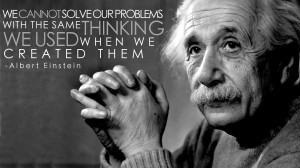These days we talk a lot about creativity and innovation as a result of it. Recently I had an improv workshop with some HR people and the theme was in the same area: Creativity in HR. And it’s a good thing we are preoccupied with this topic, because it challenges us to come up with more and more solutions to the problems around us.
Unfortunately, everybody says that they are/want/understand they have to be innovative, but few actually are or work towards it. I’m afraid that the concept might become just a fancy word. But let’s stay positive!
Clayton M. Christensen, a professor at Harvard Business School, identifies two types of innovations: sustaining innovation and disruptive innovation. They have different characteristics and his research shows that being innovative requires much more than “wanting”. As he shows, sometimes, being a great manager might stand against you – and here lies the dilemma.
1. The sustaining innovation is an improvement in whatever characteristic the market focuses on: functionality, reliability, convenience or price. Usually, market leaders are very good at implementing sustaining innovations and research shows that it’s even best not to be the first one to do it. Let others test it first. (think about the evolutions of hard drives for personal computers – with more and more bytes available).
2. The disruptive innovation is much complicated than that, and well, disruptive innovations are more likely to put companies out of business. In this case it’s best that you are the first to introduce it and the ones introducing it are usually small companies/ start-ups. (think about a hard drive so small, that wasn’t interesting for the PC, but later became an important part of a laptop – and how many PCs do you see around you these days?)
But why small companies and not the big ones? Because, at first, a result of a disruptive innovation might be a product that addresses a really small market or even a market that did not exist before. So for a big company, this is not appealing as the profit margin is too low, the marketing research shows the people don’t want it and you can’t predict weather it will actually work or not or how it will transform.
***
There are some ideas you can try if you want your “big” company to be innovative: you might start an independent start-up and use it as a trial&error. But the overall lesson is that innovation requires taking risks, so practice that before anything else.
Especially because we need innovations. There are so many things that don’t work so well in our society nowadays.


